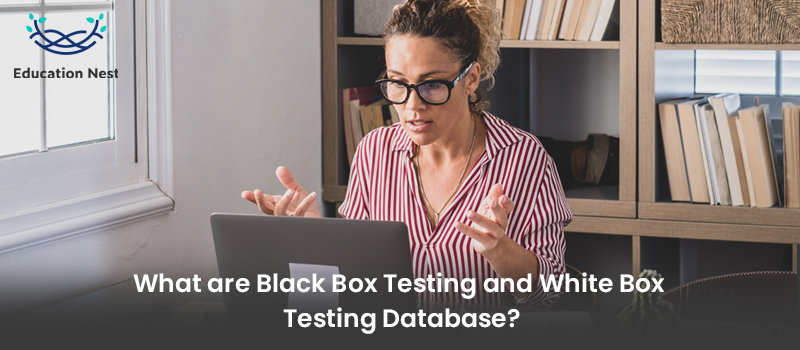
Are you someone preparing to become an SQL developer? Do you need a guide for SQL interview questions? If yes, then you’ve landed on the right blog. Let us first understand what SQL is. And then, we will talk about SQL interview questions and answers you need to prepare.
What is SQL?
Structured Query Language, or SQL, is a programming language used for working with relational databases.
In the domain of relational databases, this language is the gold standard. SQL is the standard database language for all relational database management systems (RDMS), including MySQL, Microsoft Access, Oracle, Sybase, Informix, PostgreSQL, and SQL Server.
Let’s Learn a Few Basic SQL Interview Questions

Q1. What are Databases?
A database is a collection of information you can get from a server or computer on your network. Massive, intricate databases are constructed using set design and modelling strategies.
Q2. Explain DBMS.
DBMS is an abbreviation for Database Management systems. It is a system program that handles data storage, access, modification, and management. It acts as a bridge between our database and those using it via other applications or directly.
Q3. Can you differentiate between SQL and MySQL?
SQL is a data-processing language standardised for accessing and updating relational databases. On the other hand, MySQL is an RDBMS (Relational Database Management System) for handling SQL databases, much like SQL Server, Oracle, and IBM DB2.
Q4. How do fields and tables work?
In computing, a table is a structured collection of information recorded in rows and columns. Vertically, we have columns, and horizontally, we have rows. A table’s rows are called records, and its columns are called fields.
Q5. What are SQL Constraints?
Table data rules can be specified with the help of constraints. It can be used for a single column or a whole SQL table when the table is first created or afterwards with the ALTER TABLE command.
The following are the constraints-
- NOT NULL prevents the NULL value from getting added when used on a column.
- The CHECK operator ensures that a field’s values pass a predetermined test.
- DEFAULT will use the next available value if no value is entered for the field.
- UNIQUE – Forces the field to only accept unique values.
- The INDEX command indexes a field, allowing for speedier record retrieval.
- A table’s primary key is a string which can be used to locate a specific entry inside that table.
- FOREIGN KEY guarantees another table’s record’s referential integrity.
Q6. What are the types of relationships in SQL?
The database’s relations can be divided into the following categories:
- One-to-one is a relationship between two tables where the maximum value of each record inside one table equals the value of one form within the other table.
- The most common relationship between tables is the one-to-many or many-to-one relationship, in which a single record in one database may be connected to several entries in another.
- Relationships requiring several instances on both ends of the connection are described as “many-to-many.”
- Self-Referencing Relationships are the mechanism when a table has to declare a relationship with itself.
Q7. Define ‘Schema’ in SQL server.
A database’s schema is a graphical representation of its underlying data structure. It constructs and defines the connections between the many things in the database. It is shorthand for the many restrictions placed on a database. The document also describes the different data types. Tables and views are also supported.
- Different types of schemas exist, each with its unique characteristics. Both the star and snowflake schemas are widely used.
- Entities belonging to a star schema are shown as stars, whereas those belonging to a snowflake are depicted as snowflakes.
- The schemas of a database are the backbone of any database design.
Related Post: Frequently Asked Python Interview Questions You Must Know
Intermediate SQL Query Interview Questions for five years of experience

Next, we have intermediate-level SQL interview questions.
Q8. What do you understand about Data Integrity?
Maintaining data integrity ensures that information remains valid and dependable throughout its useful life. It is essential to any data storage, processing, or retrieval system. It must be considered at every stage of development and operation.
When data is put into the database or application, integrity constraints are defined so business rules can be enforced.
Q9. Explain the difference between the TRUNCATE and DROP commands.
When the table is dropped, everything connected to it is also removed. The integrity tests and restrictions, along with the rights and grants the table enjoys, are all part of the table definition.
All the table’s related components must be redefined to build and utilise the table once more in its original form.
A truncated table, however, avoids the complications mentioned above. The table’s format does not change.
Q10. In SQL Server, what is a function?
Functions are database objects in SQL Server. It’s a collection of SQL queries that take arguments, process the data, and only return the results. There is no way to insert, edit, or remove data from a table in a database; functions can only produce a specific value or table.
Advanced-level SQL interview questions

Lastly, let us learn about a few SQL interview questions for 10 years of experience
Q11. Can you explain the Stored Procedure?
A stored procedure includes a SQL script which can be saved and reused. It is a function that uses multiple SQL statements to interact with the database. We can group a series of SQL commands into a single “stored procedure” and then run it as needed.
As a kind of modular programming, a stored procedure allows us to write code only once, save it, and reuse it whenever necessary. Compared to doing numerous queries, this also helps with execution time.
Q12. Differentiate between OLAP and OLTP.
Online transaction processing (OLTP) is a group of software solutions that efficiently enable transaction-oriented systems. One of the most significant characteristics of an OLTP server is its ability to maintain consistency. The OLTP system employs decentralised planning to avoid single failure points. This system is intended for many users to conduct quick transactions. The searches in such databases are often essential, need a fast response time, and return relatively few records. Therefore, the amount of transactions each second serves as a valuable metric for these systems.
Online analytical processing (OLAP) refers to software applications defined by lower frequencies of online transactions. In OLAP systems, the computation efficiency is heavily dependent on the reaction time. Consequently, such methods are often used for data mining or maintaining aggregate historical data. They’re typically implemented in multidimensional schemas.
Q13. What are Black Box Testing and White Box Testing Database?

White box testing focuses mainly on the inner structure of a database, where users conceal specified information. The white box testing approach comprises the following components:
- Internal errors can be eliminated as the code problem can be identified by examining the white box.
- All default table values are selected to ensure database consistency.
- This method validates the rule for referential integrity.
- It facilitates modular testing of database methods, triggers, filters, and SQL statements.
Black box testing often includes evaluating the interface following database integration. The black box technique of testing consists of the following:
- Mapping details
- Validation of incoming information
- Verification of data emitted by the other search functions
Q14. Explain Hybrid OLAP.
Hybrid OLAP (HOLAP) stores multidimensional data using a mix of multiple database structures & relational database tables. Analysis services keep the groupings for a HOLAP split in a multifaceted form. The information is kept in a database system.
Q15. What do you know about Self Join?
In SQL, Self Join is used to join a table to itself. Every row of a table is connected with itself and adjacent rows of the table based on specific parameters.
Summing up, one can practice SQL interview questions and aim to ace the interviews.

